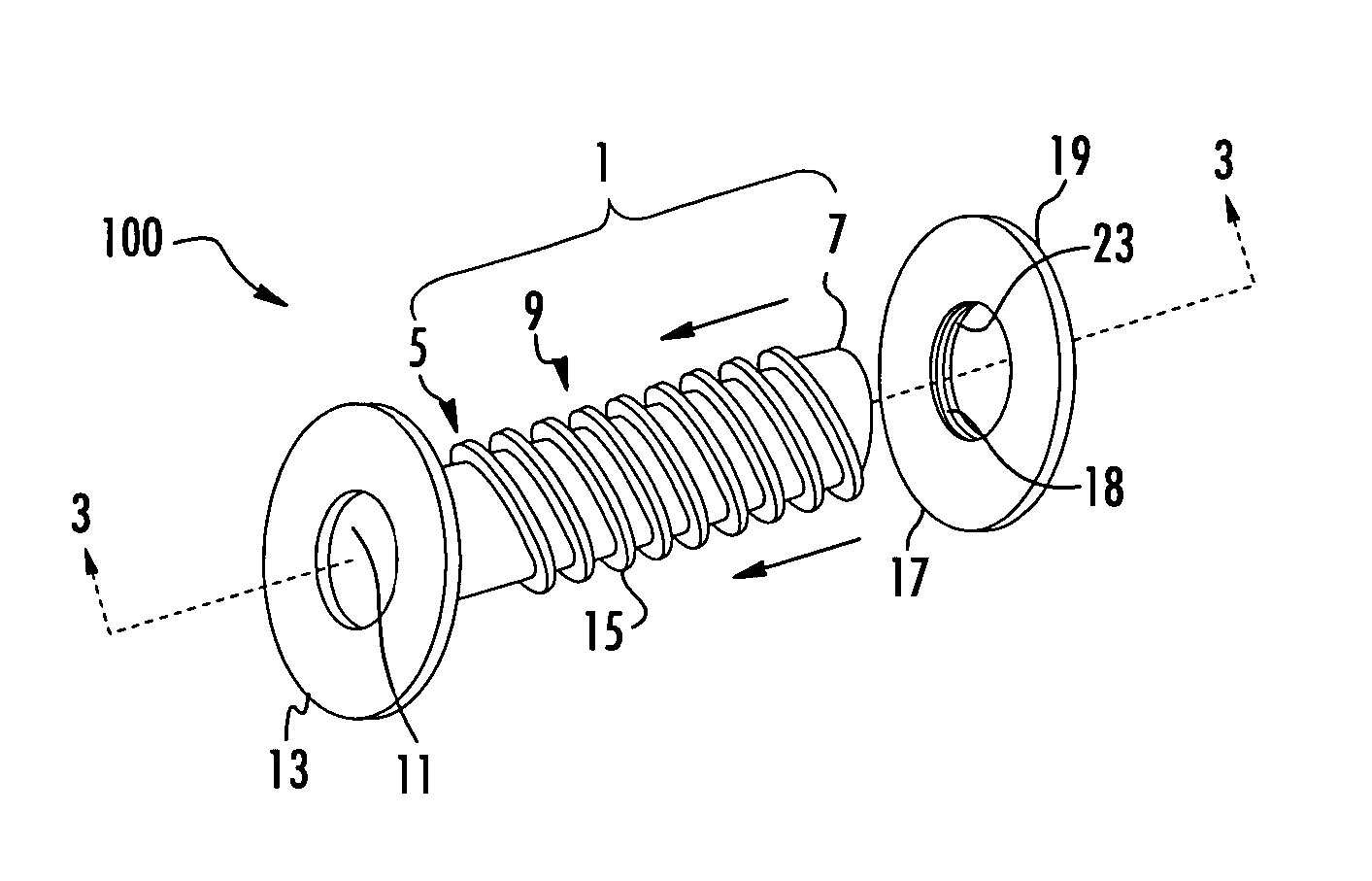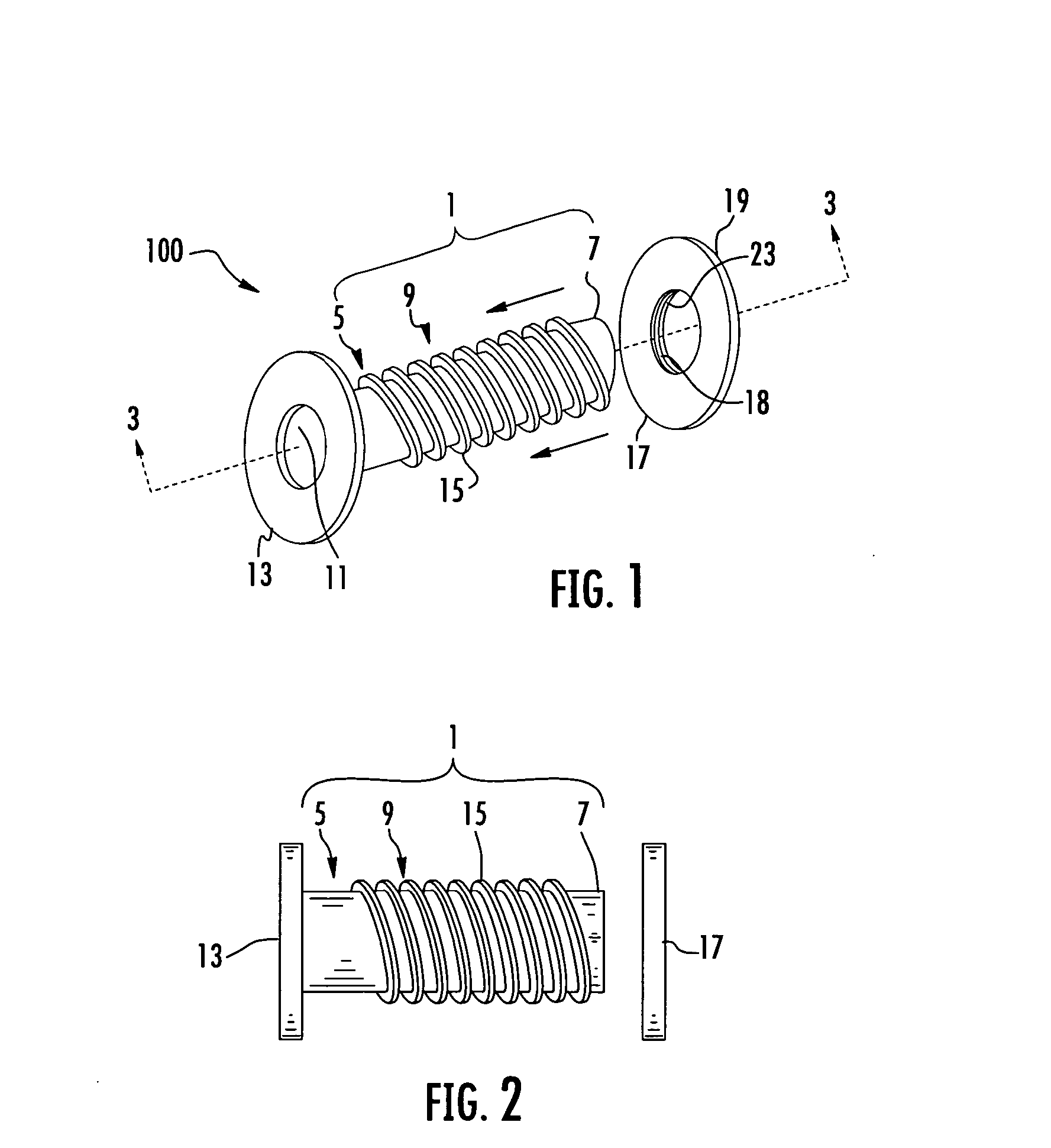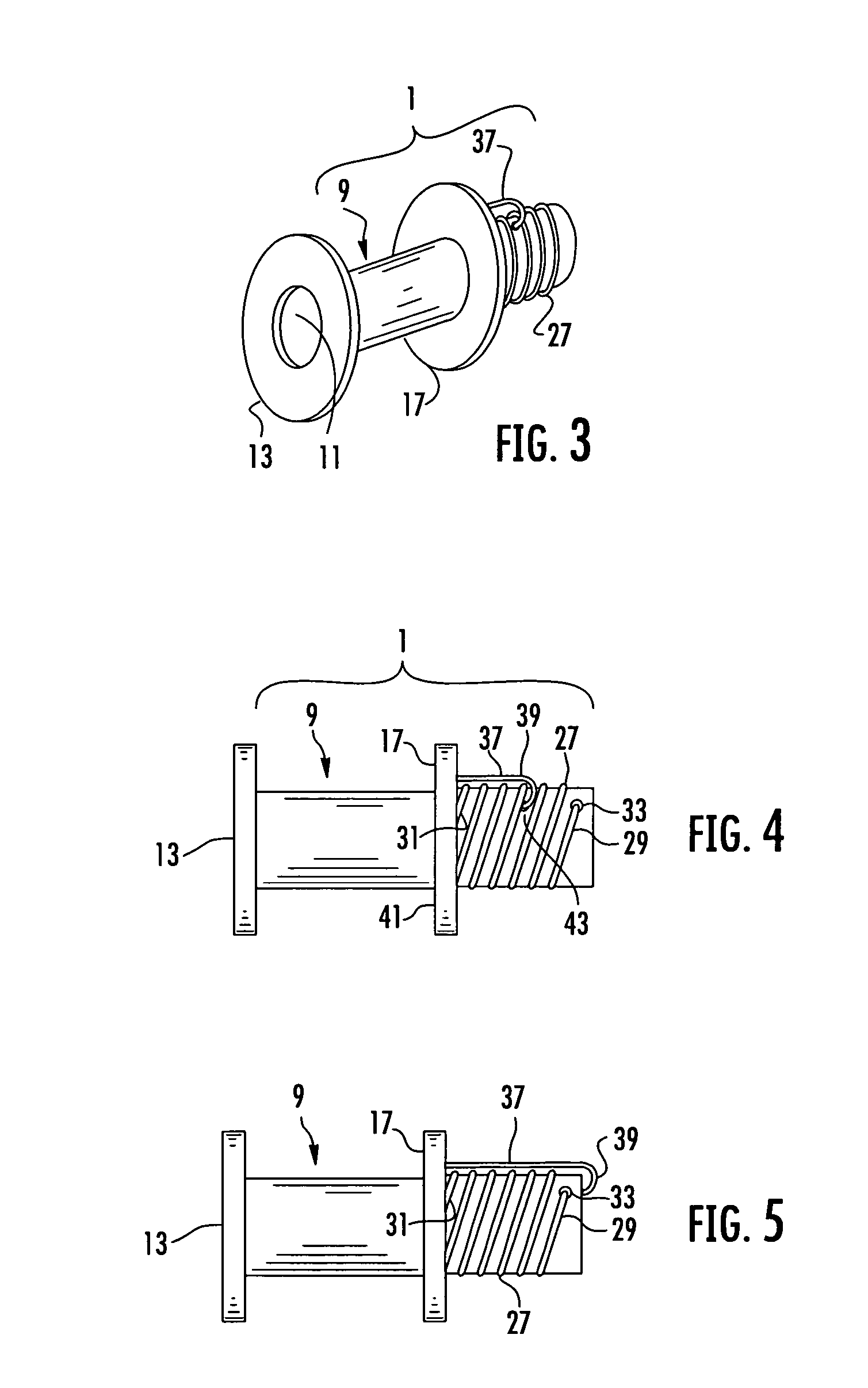Vascular conduit device and system for implanting
a technology of vascular conduits and fluid conduits, applied in the field of devices and methods for creating and maintaining fluid conduits, can solve the problems of valve replacement, poorly accepted aac insertion procedures, and inability to achieve the same degree of technical simplicity as aac insertion operations, so as to improve the ease and safety of vascular conduit insertion
- Summary
- Abstract
- Description
- Claims
- Application Information
AI Technical Summary
Benefits of technology
Problems solved by technology
Method used
Image
Examples
first embodiment
[0056] A ventricular coring device 830 may then be threaded in-line over the hemostatic device 820 and a core of ventricular muscle is removed from the tissue wall 850 of the apex in order to form an aperture 800. In addition to known coring techniques, an annular contact laser (and in some embodiments a “cool” cutting pulsed excimer laser, having elements arranged in a circular array 835) may be used to vaporize the tissue along the perimeter of the core. The cored tissue may then be removed according to known methods. According to a further alternative embodiment, a contact laser may be used to vaporize the entire area of the core, eliminating the need to remove cored tissue. In yet another embodiment, a mechanical coring device (such as a catheter-based rotoblator device) or an ultrasonic coring device, may be used to form the aperture 800. No matter the method of coring, once coring has been-completed, the coring device 830 may be removed while the occlusion device maintains hem...
second embodiment
[0057] According to it second embodiment, once the flexible flange 13 has been introduced into the ventricle and pulled back to engage the first tissue surface 853, release-device 37 is released, allowing biasing device 27 to force the external ring 17 against the second tissue surface 855 of the ventricular apex. According to a further aspect of this embodiment of the invention, threads on the inside diameter of external ring 17 may be made to engage threads on the outer surface of the tube 1 to further secure external ring 17 against the tissue wall 850 of the ventricular apex.
[0058] Once the vascular conduit device 100 is firmly in place (see generally FIG. 8B), the occlusion device 820 may be retracted and withdrawn. The vascular conduit device 100 may then be clamped shut and / or capped while its free end (defined by the proximal end 7 of the tube 1) is connected to a valved conduit and / or graft which may terminate at a complementary vascular conduit device 100 implanted in the ...
PUM
 Login to View More
Login to View More Abstract
Description
Claims
Application Information
 Login to View More
Login to View More - R&D
- Intellectual Property
- Life Sciences
- Materials
- Tech Scout
- Unparalleled Data Quality
- Higher Quality Content
- 60% Fewer Hallucinations
Browse by: Latest US Patents, China's latest patents, Technical Efficacy Thesaurus, Application Domain, Technology Topic, Popular Technical Reports.
© 2025 PatSnap. All rights reserved.Legal|Privacy policy|Modern Slavery Act Transparency Statement|Sitemap|About US| Contact US: help@patsnap.com



